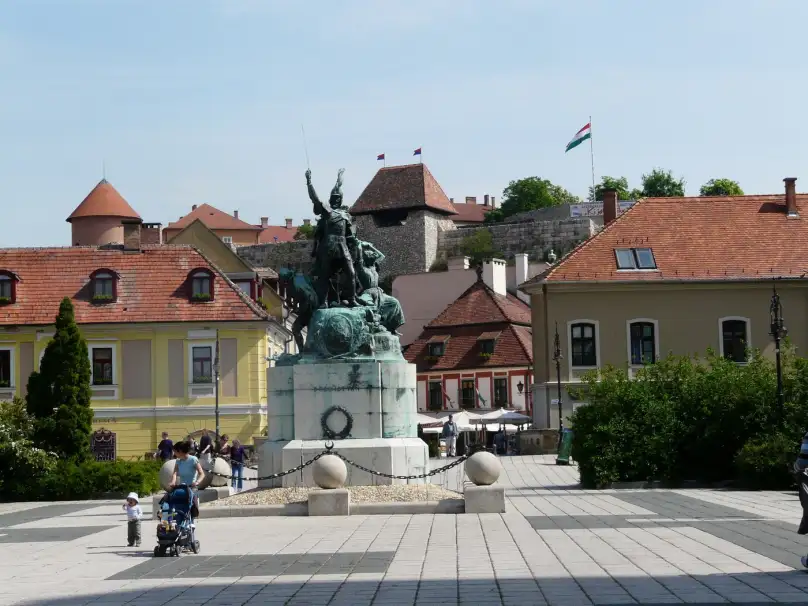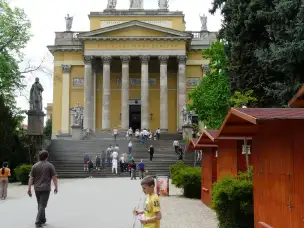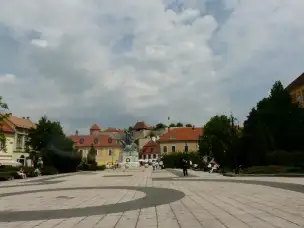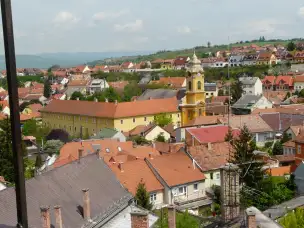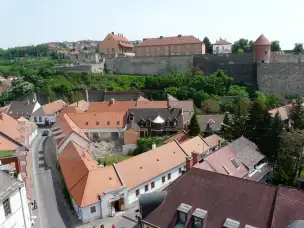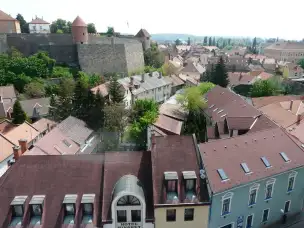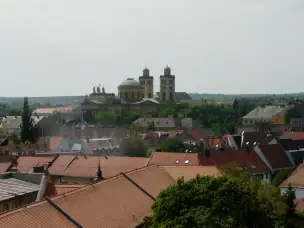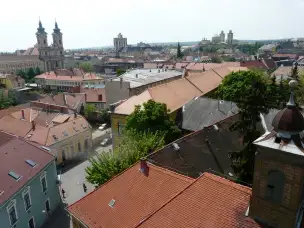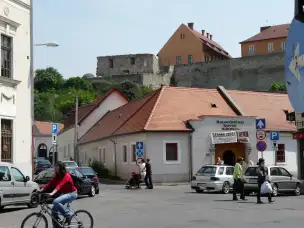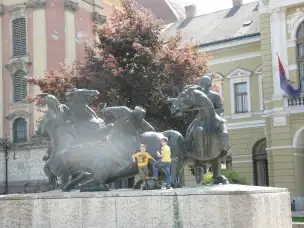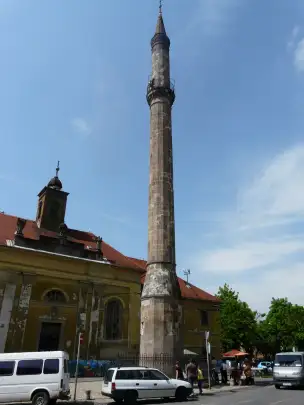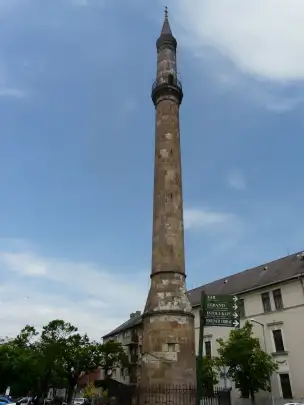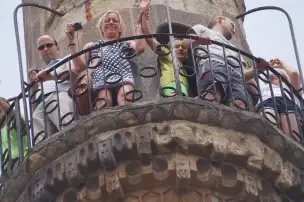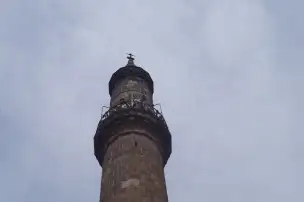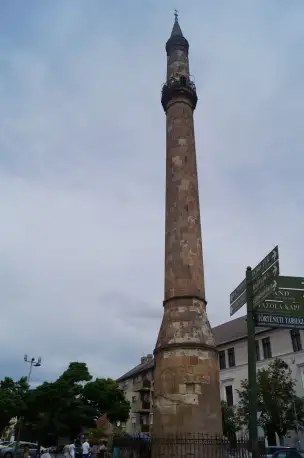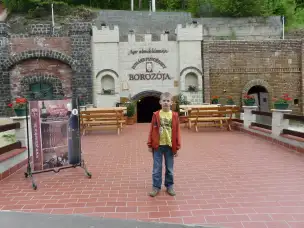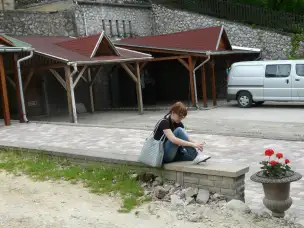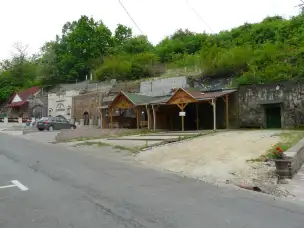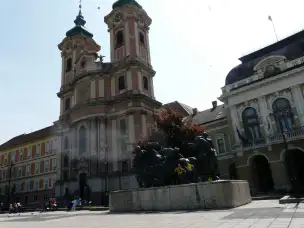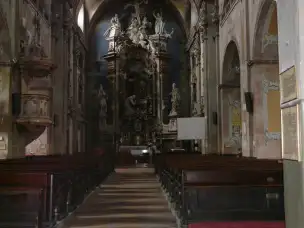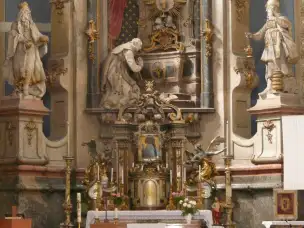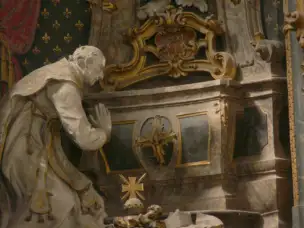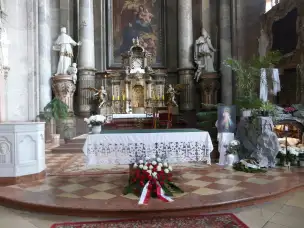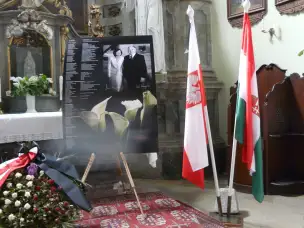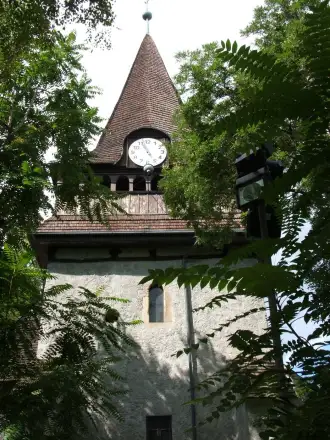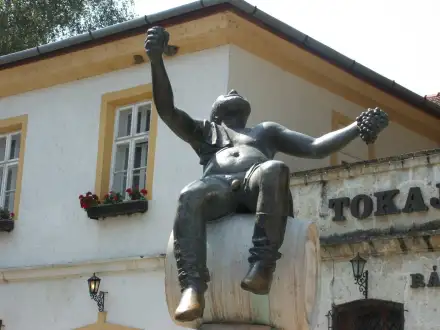A city famous for its beautiful historical monuments, wine, and warm thermal springs.
After Tokaj, Eger is the second most popular wine region in Hungary. When speaking about Eger wines, it’s impossible not to mention Szépasszony-völgy — the Valley of the Beautiful Woman.
Locals boast that the tradition of winemaking in Eger dates back to the Neolithic era, and the Valley of the Beautiful Woman has long been a kind of sanctuary dedicated to the goddess of the earth, nature, growth, seasons, and other important attributes for farmers.
Is this true? I don’t know, but it wouldn’t be surprising. In Bulgaria and Georgia, archaeologists have found artifacts showing that people produced and enjoyed wine long before mastering the production of bronze, beer, or mustard.
One of the most important landmarks in Eger is Eger Castle, dating back to the 13th century and one of the best-preserved castles in Europe. This castle was a crucial defensive point against the Turks in the 16th century and is now a museum where visitors can see many exhibits related to the city’s history.
Other notable monuments in Eger include the Cathedral of St. John the Baptist, the Church of St. Anthony of Padua, and many beautiful buildings from the Baroque and Classical periods.
Eger is also a renowned wine region, famous for its Bikavér (Bull’s Blood), one of Hungary’s finest wines. The city has many wine cellars where various types of wine can be sampled.
Eger is also known for its thermal springs, popular among tourists and locals alike. The most famous are the thermal bath in the city center and the thermal spa in the nearby village of Egerszalók, where water reaches temperatures above 70°C (158°F).
Minaret in Eger
The minaret in Eger was built in the 16th century by Ottoman invaders during the period when the city was under Ottoman rule. Construction began in 1596 and was completed in 1601. It is one of the best-preserved minarets in Hungary. Despite some damage and discoloration over time, it still attracts tourists and is a protected monument as part of Hungary’s cultural heritage.
It is the northernmost surviving Turkish monument, a remnant of a former mosque.
Wines from Eger
The Eger region in Hungary has a long and rich winemaking tradition, although its international fame is somewhat less than that of the renowned Tokaj, primarily known for its sweet wines like Tokaji Aszú. Nevertheless, Eger plays an important role in Hungarian viticulture, especially for red wines. Here are some highlights:
-
Egri Bikavér (Bull’s Blood of Eger) – The region’s signature wine
-
A red cuvée, a blend of several grape varieties.
-
Traditionally includes Kékfrankos (Blaufränkisch), Kadarka, Merlot, Cabernet Sauvignon, among others.
-
The style is balanced: medium to full-bodied, with notes of dark fruits, spices, and sometimes oak.
-
The name “Bull’s Blood” comes from a legend dating to the 16th-century Turkish siege of Eger, when defenders supposedly drank red wine mixed with bull’s blood to boost courage—an effective marketing story.
-
-
Egri Csillag (Star of Eger) – The white wine answer to Bikavér
-
A white cuvée made from various local and international grape varieties.
-
Introduced only in the 21st century as a modern regional offering.
-
Light to medium-bodied, aromatic, often with citrus, herb, and floral notes.
-
Szépasszony-völgy – Valley of the Beautiful Woman
Szépasszony-völgy is known for its rich winemaking heritage. This area cultivates various grape varieties used to produce high-quality wines, including the popular Egri Bikavér (Bull’s Blood) and Egri Leányka (Girl of Eger). Visitors can tour vineyards, taste wines, and learn about the production process.
The valley features many traditional cellars carved into tufa rock, which are characteristic of the landscape. These cellars serve as storage for wine and as cozy spots to relax and enjoy local specialties alongside a glass of wine.
Szépasszony-völgy also offers a variety of restaurants and cafés where visitors can try traditional Hungarian dishes and delicacies. It’s an excellent place to savor regional specialties like goulash, lángos (fried flatbread), and typical Hungarian desserts.
Church of St. Anthony of Padua in Eger
The second largest church in the city after the main cathedral, and the third largest in Heves County.
Construction was completed in 1767; thereafter, interior and façade decoration began. The main façade bears the date 1771, but the church was consecrated only on April 18, 1773, by Bishop Ignác Batthyány.
The ceiling frescoes were painted between 1769 and 1770 by Márton Reindl, a painter from Bratislava. The main altar painting was created by János Lukács Kracker in 1771. The red marble altar table was crafted by Márton Szelecky.



